Military innovation. US defense technology

In his epic "On War", Karl von Clausewitz proclaimed that
The same is true for innovation in the military. A leader - military or civilian - who intends to innovate must first ask and understand: what innovations are desirable?
It's good if he has someone to ask, and he is able to understand these tips.
But without defining the subject of discussion, it is impossible to understand its essence.
This applies to both the leader and everyone involved.
Terminology and domain clarification
A prerequisite for our thinking about military innovation is a clear and precise definition of what is meant and what is not meant by defense innovation.
This is because defense innovation is sometimes used interchangeably with other terms and concepts that seem similar, if not identical, but have important differences, such as military innovation or national security innovation. Without specifying these differences, many authors investigate only a part of the problem that corresponds to their competence and ability to understand the problem as a whole.
There are three key components of both defense and military innovation: technological, organizational and doctrinal.
Technologies serve as a source of defense and military innovations and specific types of weapons and military equipment (IWT).
Organizational, programmatic, and doctrinal changes bring about what the more specialized literature calls process innovation.
In this article, we restrict ourselves to discussing issues related to military technological innovations, including, in particular, the development of new types of weapons and military equipment.
Obtaining a decisive technological advantage is an endless pursuit of the defense departments and the states they protect.
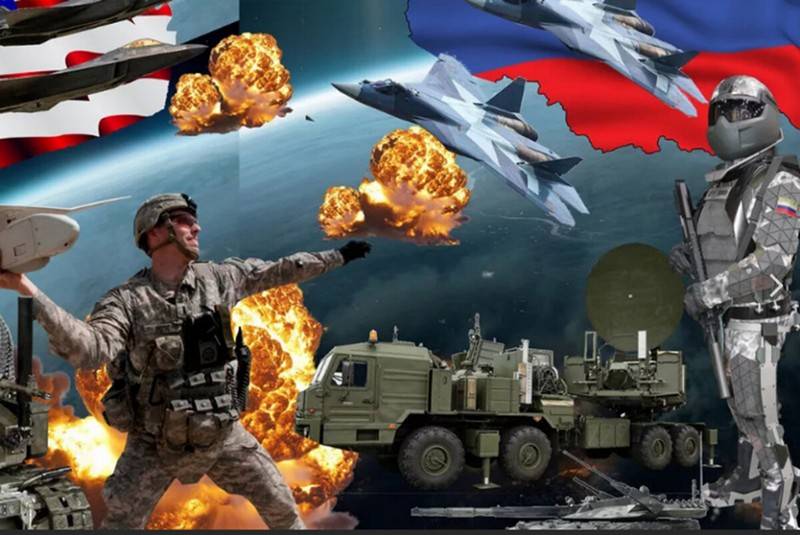
The world is currently in one of these whirlpools of revolutionary change brought about by the merging of two transformational phenomena.
At first, it is an intensifying geostrategic and geo-economic rivalry among the major powers, especially between the United States, Russia and China.
Secondly, it is a global technological revolution that is taking place in both the civilian and military spheres.
In this regard, in the mainstream discussion of American security policy, there is speculation that the United States is technologically lagging behind, especially in comparison with China, and in some areas - even behind Russia.
This is a pleasant assumption for the Russians and the Chinese, but let us assess how solid it is.
list of Assets
The US military remains at the forefront with a well-developed defense innovation system.
The US has been particularly prolific, supporting dozens of innovative organizations that are part of what is now defined as the national security innovation base.
Overly panicky warnings about US military weakness come from a democratic and largely politicized threat assessment system that constantly looks for potential military threats and examines its own technical problems.
Security
Geopolitically, the United States is a very safe country. It is surrounded by two large oceans and two safe neighbors. Its reconnaissance and surveillance systems monitor the globe in search of dangers. The US has a nuclear weapon, the Navy and Coast Guard on constant patrol, the Air Force on high alert and with global reach, and the Army and Marine Corps unmatched in capabilities and recent combat experience.
But many Americans believe that all of this is slipping away, that America is becoming vulnerable and losing its power and dominance. They cite internal and external sources of vulnerability. They argue that American power is being wasted by the incompetence of Congress, the weakness of the president, and a bloated, sluggish bureaucracy that cannot keep up with the challenges.
Some Americans fear that rival countries (China in particular) may use rapidly advancing technology to create advanced weapons that will defeat the United States.
The ousted Republicans are making full use of these arguments in their fight against the Democratic Biden administration.
A new trend has emerged: the geopolitical conflict between states is personified in the personalities of their leaders.
Even if they are American flies.

Author's assumption
There is reason to believe that the American defense research and development system, honed during the Cold War and expanded since then, is fully capable of handling any military mission.
It is a giant machine for creating technology, supporting innovation, and waging war. The United States' “hard” innovation capabilities — “factors of production and infrastructure,” such as R&D facilities, human capital, access to foreign technology, and the availability of finance — far exceed those of all potential competitors.
Despite warnings that the US is no longer spending enough on R&D and that China's R&D spending is on the rise, the reality is that the United States is by far the leader in military innovation investment. From a functional point of view, the United States dominates all other countries, including China, in the actual allocation of resources for defense research and development.
More importantly, the US defense technology system is being pushed to innovate, due to specific factors that do not appear to such an extent in other countries.
At first, the political culture of the United States highly values technology: it is assumed that technology is the solution to most problems, including the military.
Secondlycompetition is deeply rooted in defense, as it is in much of American society, stimulating new ideas and providing a variety of approaches to any problem in the event that one technological trajectory does not work as expected.
Competition spreads between different military services and agencies, each of which seeks to offer solutions to the country's strategic problems, and also between firms with different philosophical and technical views.
ThirdlyThe United States also welcomes foreign ideas much more readily than other countries, given the US's openness to immigration, especially among highly skilled and technical professionals.
The forces and means of the US intelligence community are aimed at obtaining scientific and technical information of an open and secret nature, and they do it quite successfully (which we can judge not only by the appearance of the military-technical innovations themselves, but also by frequent reports of the FSB press service, who arrested another American spy working in the Russian military-industrial complex).
At last, organizational innovations during the Cold War in the United States created ad hoc hybrid public-private organizations, Federally Funded Research and Development Centers (FFRDC)which offer unbiased technical advice and knowledge building mechanism - a unique system that works very well overall.
These factors stem from a distinct set of American organizations, in particular independent military services, competitive defense industry firms that readily form networks or groups of suppliers, even if each one maintains its own core competencies and technical skills.
Because of the difficulty of replicating America's unique innovation institutional drivers and capabilities, the US defense innovation system will remain at the forefront for years to come, and will not be surpassed by any potential international rival.
Is the United States losing its military superiority?
We argue.
Gulf war
In the early 1990s, with the collapse of the Soviet Union, which marked the end of the Cold War and the rapid defeat of Iraq in the Gulf War, the United States had a dominant military advantage against all countries in terms of the parties' nuclear and conventional capabilities.
The first Gulf War was an important marker because it exposed the power of technology to Western society, at least in conventional warfare. This conflict resolved a dispute between high tech and low tech that continued throughout the Cold War.
The air war lasted six weeks to clear the way for a successful 100-hour ground invasion and bring new technology to air attacks.
Many associate this advantage with the so-called Reagan buildup, which actually began in the last two years of Carter's rule, and then expanded under President Reagan (the notorious version that the SDI program was a bluff aimed exclusively at the collapse of the USSR is not discussed by the author, because it is not just far from the truth, but fundamentally erroneous).
The increased capital investment required hundreds of billions of dollars to be invested in the modernization of nearly every part of the American army.
The modernization of nuclear forces, for example, included the acquisition of Ohio SSBNs - ballistic missile submarines, Trident D-5 and MX Peacekeeper precision missiles, B-1B and B-2 bombers, as well as accelerating efforts to improve strategic command and control, anti-submarine warfare and "Ballistic combat" missile systems.
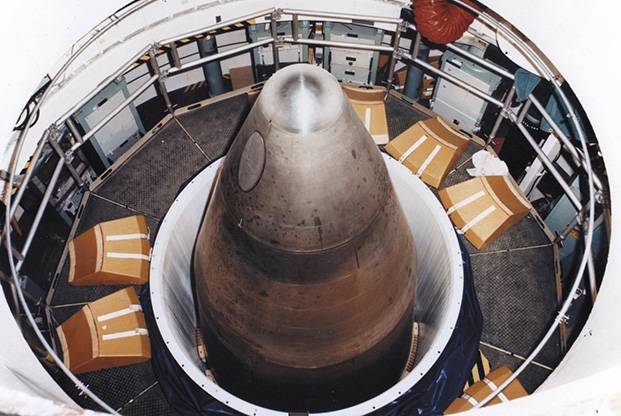
Improvements to conventional armed forces included supplying troops tank Abrams, Bradley infantry fighting vehicle, Apache attack helicopter and Patriot missile system, construction of nearly 600 Navy ships and deployment of A-10, F-15, F-16, F / A.-18 and JSTARS aircraft, along with important technical improvements in realistic training and investment in troop quality.
As the Gulf War has shown to the world, the heavy metal numerical advantage on the battlefield has gone from being a source of military power to an easily reducible target.
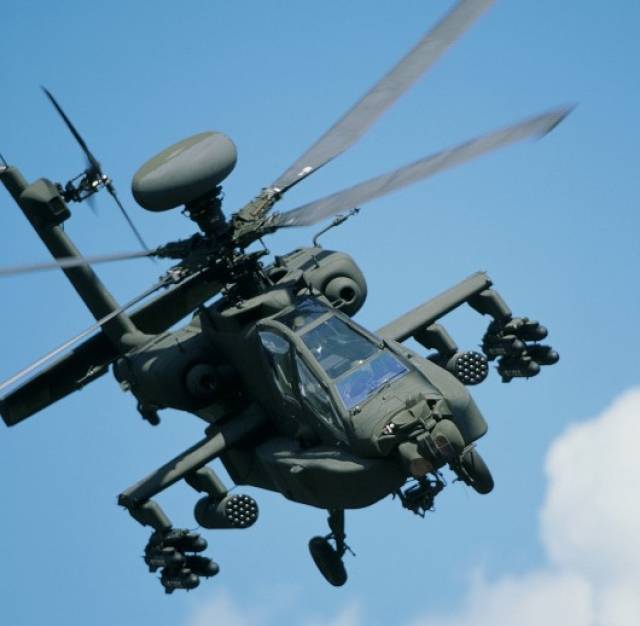
Technology allowed Western states to hit targets at great distance with high accuracy, but without risking those who fire from weapons, which has become very useful in the era of modern warfare.
Perhaps the best example of the strengths and weaknesses of this approach was confirmed by bombing raids over 78 days. aviation Serbia's NATO in 1999.
While the technological paradigm was briefly questioned in Iraq in 2006 and forced to be replaced by a more labor-intensive approach to warfare articulated in counterinsurgency principles, this was again quickly replaced by a less risky, more capital-intensive approach to warfare: methods of warfare. using satellites, robots, drones, high-precision weapons and special forces.
Since then, technology has been considered almost a panacea.
The actual defeat in Iraq and Afghanistan, at least for a brief moment, allowed Western states to rethink the role and place of high-tech weapons. It turns out that they are not so omnipotent.
Loss of the main enemy
Among the consequences of the collapse of the Soviet Union was a reduction in the size of the standing United States force by a third and an increased use of the remaining forces for interventions around the world.
Anti-ship missiles, air defense systems and even more Javelin systems - the Americans are developing a new plan for the supply of lethal weapons to Ukraine. As the Western media emphasize, this is necessary in the event of a direct military clash between Kiev and Moscow.
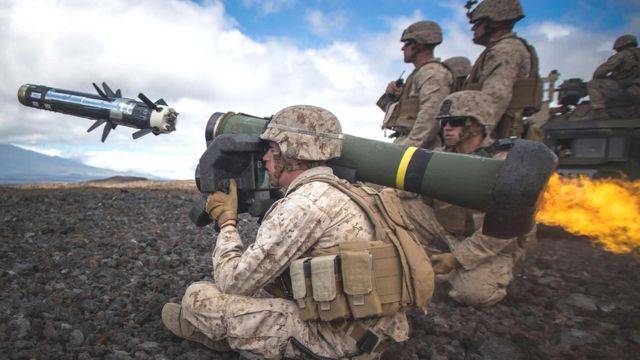
Both Russia and China, through sophisticated tactics and the use of precise offensive and defensive systems, appear to be on the verge of weakening the global reach of American power.
Add to this their development of space and cyber weapons, and America's once undeniable military superiority is threatened. These threats to America's previously established technological advantage seem to call for a new round of American innovation.
Defense R&D spending
Technologies develop in different directions and are used by pioneers in many places.
However, the United States has mobilized on such a scale, for so long, with particular emphasis on using its vast scientific and engineering resources for defense, that it will not immediately lag behind in technology and weapon quality.
The United States currently invests more than $ 75 billion annually in defense R&D and another billion dollars in DOE nuclear weapons R&D. That's roughly two-thirds of what every other country in the world, America's friend or foe, spends on defense research and development (and that's not counting the very sizable black budget).
The relentless drive to expand military technological advances has always kept R&D spending high, and the overall spending trend has increased in parallel with the increasing complexity of weapons. Although the increase in the R&D budget has not been constant, it has peaked and stuck at very high levels.
OSRD
Intense US interest in defense research began at the beginning of World War II, and was initiated by scientists, not the military. American scientists were frustrated at the inability of the military to use them effectively in World War I when they were confined to military laboratories and subject to military discipline.
Led by MIT's Vannevar Bush, they reached out to President Roosevelt and created their own organization to manage wartime research, eventually dubbed the Office of Scientific Research and Development (OSRD). This office, not the military, directed efforts to develop the atomic bomb, radar, and many other significant technical achievements of the war.

Bush is best known for his work as head of the United States Office of Research and Development (OSRD) during World War II, which conducted nearly all wartime military research and development, including the Manhattan Project. In this role, Bush coordinated the work of leading American scientists on the application of science to war and was consulted on many of the White House decisions regarding the war.
Before World War II, contractors hired to manufacture American weapons during the wars returned to their commercial business at the end of each war as military needs soon disappeared. But the end of World War II was quickly followed by the Cold War and an ongoing demand for weapons.
Many firms remained in the arms business, some focused solely on defense, while others formed specialized units to serve the military. This was especially true in the aviation industry, where firms such as Lockheed, Northrop, Grumman, McDonnell, Douglas, and Boeing grew into powerful corporations, designing and manufacturing aircraft and missiles that played a central role in the Cold War arms competition.
Little of this R&D structure left at the end of the Cold War.
Although OSRD itself was disbanded, at least part of its work continued in various organizations and laboratories operated by universities and contractors, in federal-funded research centers and research centers affiliated with universities.
These organizations play a vital role in creating soft innovation opportunities in the United States, while preserving the institutional memory of past R&D efforts.
For example, the radiation laboratory at Massachusetts Institute of Technologywhich worked on the radar during World War II, was renamed the Lincoln Laboratory and continued under the management of the Massachusetts Institute of Technology as FFRDC, doing classified work for the Air Force.
University of California directs the Nuclear Bomb Development Laboratories at Los Alamos and Livermore, designated National Laboratories of the Atomic Energy Commission.
The navy has its own set of laboratories, often referred to as the Applied Physics Laboratories, at Johns Hopkins University, the University of Hawaii, Pennsylvania State University, and the Universities of Texas and Washington.
FFRDC and their associated organizations do more than provide the US military with the latest research on important technical and political issues. As a non-profit organization dedicated only to serving government agencies, they are a source of valuable and unbiased technical advice.
Today, the United States spends more in real terms on defense research than it did at the height of the Cold War. Defense industry mergers and base closures have resulted in changes in ownership of some military research facilities, but not in the downsizing of many.
The Defense Ministry's research organizations now employ about 100 people in 000 research laboratories and centers.
Incentives for military innovation
What also did not disappear with the end of the Cold War were the incentives that supported US military innovation — the institutional factors or “general prescriptions that govern the behavior of participants within the system” that govern the American system of defense innovation.
There are at least three of them.
One of them is the concern to avoid casualties. The drive to prevent casualties is deeply rooted in American military operations and stems from both the country's chronic labor shortages and the democratic nature of American government.
Secondly, there is a rivalry between the various components of the American defense establishment. The race to develop new weapons and doctrine is fueled in the American system by competition between weapons. Each of the branches of the armed forces strives for special prominence among others, both in response to emerging dangers and on the basis of the president's foreign policy wishes. They are all rivals for attention, resources, and social recognition.
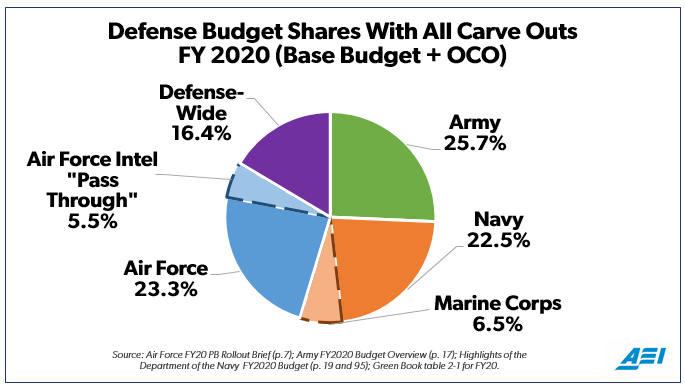
And the third Is the openness of American society to immigrants and their ideas.
The military might of the United States also benefits from immigration, which is a constant source of new ideas and great energy.
John Erickson, the acclaimed XNUMXth century American naval engineer who promoted steam propulsion and battleships, was born in Sweden. John Holland, a pioneer of the modern submarine, was born in Ireland. Igor Sikorsky, the helicopter designer, was born in Russia, as was Alexander Pavlovich de Seversky, the great propagandist of aviation.

America was the first to face the atomic bomb thanks to Albert Einstein and other Jewish refugees from Nazi Germany. In aviation, William Boeing was of German descent, the Lockheed brothers were Scottish, and John Knudsen Northrop's family was from Yorkshire.

And Abraham Karem, the creator of the Predator drone, immigrated to the United States from Israel.
Immigrants these days are a part of every aspect of American life, but primarily science and technology, as well as all areas of technology development related to defense - computer science, aviation technology, nanotechnology, robotics. No other country in the world has such an innovative reserve.
Department of Defense Research, Development and Testing
The Department of Defense (DOD) conducts research, development, testing and evaluation to support the requirements of its mission. The work funded by this appropriation plays a central role in the security of the nation and an important role in the US global leadership in science and technology.
The Department of Defense spends over $ 100 billion a year on research, development, testing and evaluation.
Approved R&D funding in FY2020 was approximately US $ 109 billion. Approximately 80-85% of this amount is spent on the design, development and testing of specific military systems.
The priorities and focus of R&D, including the scientific and technical part, do not radically change from year to year, although several fundamental policy issues regularly attract the attention of Congressmen.
These include ensuring sufficient funding for science and technology, especially basic research to support next generation capabilities, finding ways to accelerate the transition of technology from laboratory to practice, and ensuring an adequate number of scientific and technical personnel.
Department of Defense Innovative Allies
Relative manpower shortages and competition between services can help the military come up with ideas and wishlists for technology, but if the military is going to use the technology of the future, someone else will really have to design and build such systems.
Corporations.
Since the Department of Defense relies heavily on prime contractors like Lockheed Martin and Northrop Grumman to design and build their most advanced weapon systems, the technology question is really: can existing prime contractors leverage advances in technologies to create better weapons systems?
There is no indication that they cannot.
The United States continues to build the best weapons systems. They are already integrators of technologies created by others, including commercially oriented firms.
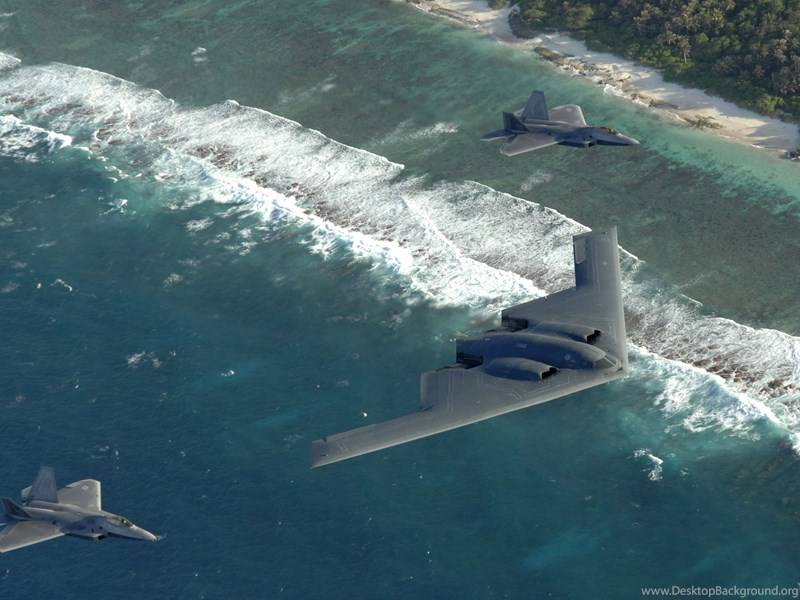
The challenge for prime contractors is to combine and manage a network of subcontractors with the appropriate technology and skills on a precise schedule and within budget constraints to create systems that can survive and dominate in the harshest conditions.
Technology is important, but it is the leading corporations that turn it into weapons by building complex systems, and that is what Lockheed, Northrop and others are doing for the American military.
Universities.
The Department of Defense uses cutting edge technology to fund some basic research and applied science and technology at universities through its own research support agencies and a set of specialized laboratories.
The US Department of Defense budget for basic research is spent at universities. The Trump administration has requested $ 2,319 billion for fundamental research by the U.S. Department of Defense in FY2021, down $ 284,2 million (10,9%) from FY2020. The Senate bill, as published, provided $ 2,407 billion for basic research by the US Department of Defense.
For more risky activities, usually involving large prototypes or technology demonstrations, the military uses Defense Advanced Research Projects Agency (DARPA).

Funding for DARPA has generally remained stable since fiscal 2003, ranging from $ 2,5 billion to $ 3,0 billion, peaking in fiscal 2020.
Likewise, DARPA funding for defense R&D has remained broadly stable since FY 1999 at 22% and 25%.
FFRDC, national laboratories and dozens of defense-backed specialized institutes are associated with all of this and have their own links to academic research.
It was this system that gave the United States a leading position in computers, created the Internet, pioneered oceanography and ocean engineering, and expanded remote sensing and satellite imagery.
These initiatives reinforce and complement what the US defense industry has been doing for decades. More importantly, the creation of these agencies is also politically sensible, as it shows that defense agencies are directly involved in what the American public considers cutting-edge technology and innovation.
Most likely, this is populism, but there is no harm from it, only benefit.
No harm, unless the Department of Defense is so preoccupied with finding new organizations that it somehow forgets that it is actually buying experience in designing and building complex systems specifically for military purposes.
There is no real lack of access to technology for commercial technology companies already involved in weapons supply chains with unique defense suppliers.
And for new members, this is a problem.
Assessment of real and phantom threats as drivers of innovation
There is no defense project more pervasive than procurement reform. Dozens of studies have been conducted in recent years, sanctioned by Congress and led by the Department of Defense, on the arms acquisition process. Changes in bureaucratic structure and regulatory details have been constant.
In all of this, there has always been the difficulty of reaching agreement within the fragmented American political system on the cost, schedule, and price of specific weapons.
But the inconsistency in Congress on defense issues probably reflects more of a disagreement over the nature and severity of the threats facing the United States than a general political division in society.
The defense split is actually weaker than it has been in the past. The danger from the Soviet Union has disappeared.
Instead, there is only a long list of potential dangers: a resurgent Russia, a rising China, the proliferation of technology, cyber hacking, terrorist threats, climate change - none of them are as exciting as the Soviet Union once did.
Why are the American people worried and their leaders expressing dismay if the United States is a very safe country?
Although the US military was cut by almost a third (from about 2,1 million to 1,4 million), little else in the security infrastructure built for the Cold War was downsized following the collapse of the Soviet Union and the dissolution of the Warsaw Pact.
The war is approaching outer space, and the Pentagon warns that it is not yet ready for it after years of underinvestment, while the military has focused on the many threats on Earth.
When the Pentagon talks about space war, it does not mean troops in sky camouflage, maneuvering with jetpacks and aiming at the enemy with laser cannons. Conflict can take many different - and mostly silent - forms, from jamming a GPS satellite, to temporarily blinding a sensor with a laser, or using a cyber attack to disrupt services.
The threats of terrorism, cyberattacks and climate change are of infinite importance and are ideal for justifying ongoing planning efforts and introducing new budget requests.
The United States created a large threat assessor to ask what-if questions during the Cold War. This apparatus, like the Institute for Defense Research and Innovation, was not disbanded at the end of the war. He finds threats "to be addressed by others."
And for this, of course, it is necessary to study potential enemies and penetrate into the plans of their leaders.
The United States pays a lot for this. Some of that cost is borne by people and organizations who continually point out hazards, potential gaps, or failures in multiple layers of protection.
Analysts warn that America is not ready for biological warfare, that its cyber defenses are inadequate and that little attention is paid to space.
These relentless calls for investment in defense, especially in new technology, are keeping the defense R&D system under pressure.
The result of this vigilance with regard to strategy and policy is the support of a vast network of laboratories, institutes, proving grounds and development centers - public and private, secret and open - that work on all fronts to create better weapons.
This innovation network is bigger than everyone else and has better funding. No country devotes more resources to defense innovation and no country has stronger institutions and incentives for innovation.
Defense R&D structure
The main form of programmatic structuring of the budget of the US Department of Defense (by item of expenditure) for the planning period is its presentation within the framework of the following 11 programs for the future development of the armed forces (FYDP - Future Year Defense Program):
1. Strategic forces.
2. Forces of general (main) purpose.
3. Reconnaissance, combat control and communications.
4. Mobile forces (air and sea transport).
5. Administrative activities.
6. Research and development.
7. Supply and maintenance.
8. Combat training, medical and other types of support.
9. Military support of other states.
10. Special Forces.
11. Secret programs.
The sixth program includes the largest part of the Pentagon's R&D (~ 69–72% of the total). All annual R&D expenditures are grouped under a common program - research, development, testing and evaluation programs - Research, Development, Test And Evaluation Programs (RDT & E or Rl).
In accordance with the budget classification adopted in the United States, the R&D programs of the Department of Defense (Research, Development, Test And Evaluation (RDT & E) Programs) are divided into the following categories of work (budgetary activities - Budget Activity, BA):
BA 1 - basic research;
BA 2 - applied research;
VA 3 - technological developments;
VA 4 - development of prototypes of serial samples of BBT (R&D for prototyping) and their subsystems (Advanced Component Development & Prototypes);
BA 5 - BBT tests, R&D and technological work in the interests of preparing for industrial production of a serial sample (System Development & Demonstration);
VA 6 - development planning, support of R&D programs, general problems of improving weapons and military equipment, material and technical support of R&D, standardization and unification, research and development programs carried out by small business organizations (Small Business Innovation Research - SBIR and Small Business Technology Transfer Research - STTR);
BA 7 - modernization of BBT, limited production of new types of BBT and trial operation.
The existing centralized system of orders for military R&D, in addition to specific customers (management bodies for R&D orders of the US Army, Navy and Marine Corps, Air Force), has 18–20 ordering departments and services of the Ministry of Defense.
Reflections on innovation
Let's highlight some of the most important considerations:
1. Efficiency.
Too often overlooked in conversations about innovation, both in the military and elsewhere, is the natural, predictable, and sometimes harmful trade-off between innovation and efficiency.
At firstIn a world of limited resources, innovation and change in one area can often undermine the military's ability to perform other sets of tasks.
SecondlyThe trade-off between research and development has far more serious implications for the military than for the private sector. For the private sector, innovation success and failure are measured in dollars.
For the military, success and defeat are measured by efficiency on the battlefield, and sometimes by lives. Therefore, it is necessary to recognize and understand where innovation will make us stronger and where it will weaken, so that we can avoid sending our troops in a situation where they are ill-prepared for the task at hand.
2. Vulnerability.
Innovation is new by definition. This is what makes them so exciting and effective - especially in a military context, where surprise can lead to significant gains on the battlefield.
But, despite all the new opportunities that are associated with innovative technologies and doctrines, we must not forget about the vulnerabilities that accompany new technologies.
Take the Internet, for example. It allows for cyberattacks against adversaries, but it also puts any country at significant risk.
Example drones.
While the pursuit of unmanned weapons and more automation in the defense sector provides the U.S. military with unprecedented intelligence, surveillance, and low-risk strike capabilities, these platforms increasingly rely on satellites, creating a new - and often underestimated - suite problems.
SWARM Is an abbreviation for Smart War-Fighting Array (Reconfigured Modules). The core technology of Drone Swarm is based on the ability of a very large number of drones, usually in the mini / micro category, to autonomously make decisions based on shared information and can revolutionize the dynamics of conflict.
In simple terms, it is like a bee hive focused on one big goal, but each bee is able to act independently in relation to other bees to achieve that goal. Due to the significant number of drones that can form part of any swarm, there is a significant degree of autonomy that the swarm as a whole and individual drones can exhibit in detecting and engaging targets.
Another important aspect of the military application of this technology is that the Swarm is literally unstoppable due to its disaggregated nature, and it can be multitasking for both ISR (reconnaissance, surveillance, target designation) and offensive missions.
The swarm of drones can be especially useful in urban wars and anti-terrorist operations, where they can be launched inside built-up areas to find hidden militants and neutralize them.
The growing US dependence on cyber capabilities creates a "paradox of opportunity and vulnerability." While US investment in cyber technology could enable the military to strike further from the battlefield and with greater efficiency, the increased reliance on satellite relay nodes, intelligence infrastructure, and GPS communications creates new avenues for attacks.
In short, new opportunities create new vulnerabilities.
3. Finance.
Those in defense research, development and procurement are all too aware of this fact.
Indeed, cost overruns associated with the development of new military technologies have become the norm for most of the large US military purchases in recent years, as the lack of truly competitive bidding and the tendency to over-commitments have dramatically increased acquisition costs.
But in addition to the common reasons for cost overruns that often accompany defense procurement, third-party technologies are likely to include advanced and even hidden technologies, some of which can lead to high costs and provide no efficiency or long-term guarantee.
4. The threat of hierarchy.
There are many reasons why the military can be expected to resist major innovation.
More than any other organization in the world, the military relies on a culture of order, discipline, and submission formalized in the military hierarchy to perform its duties well. And so, while innovation can be critical in some areas of the military, these benefits must always be weighed against the risks of degrading the military hierarchy.
5. Strategy and innovation.
Perhaps the most obvious risk of innovation that will emerge from defense reforms is the risk of "putting the technology cart ahead of the horse of strategy."
They may lead to some tactical successes, but they are unlikely to lead to revolutionary changes in military parity.
This is the occasion to discuss military organizational and doctrinal innovation in the next article.
But first, we will look at the US innovation infrastructure and the most interesting projects in the military field.
PS
All of the above is very far from domestic defense innovation realities. And parallels here, although possible, are unproductive.
However, conceptual ideas can be useful both for assessing the capabilities of an eventual adversary and for reflecting on one's own potential.
To be continued ...
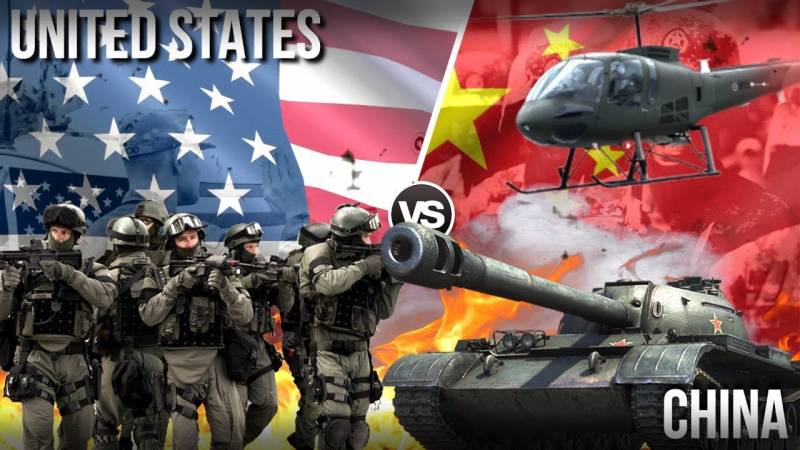
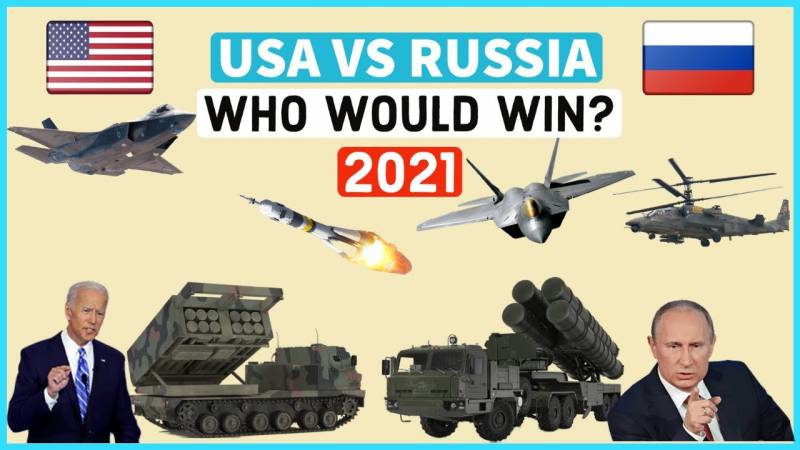
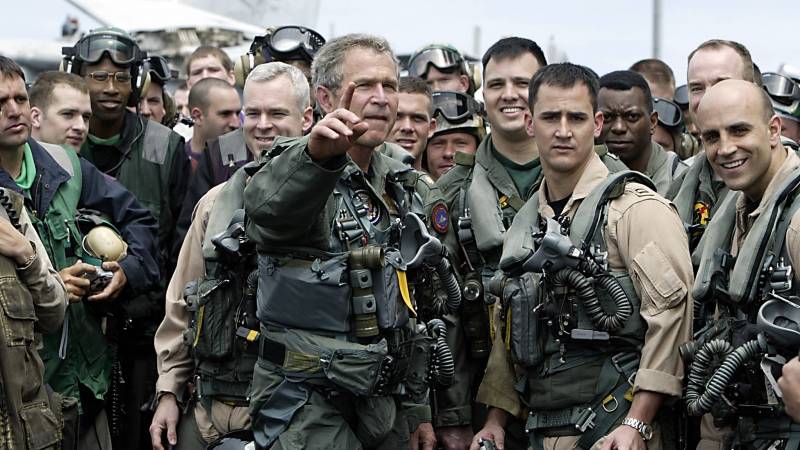
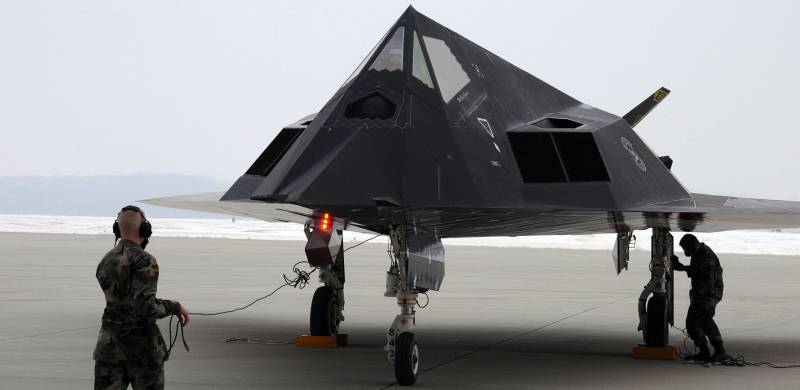
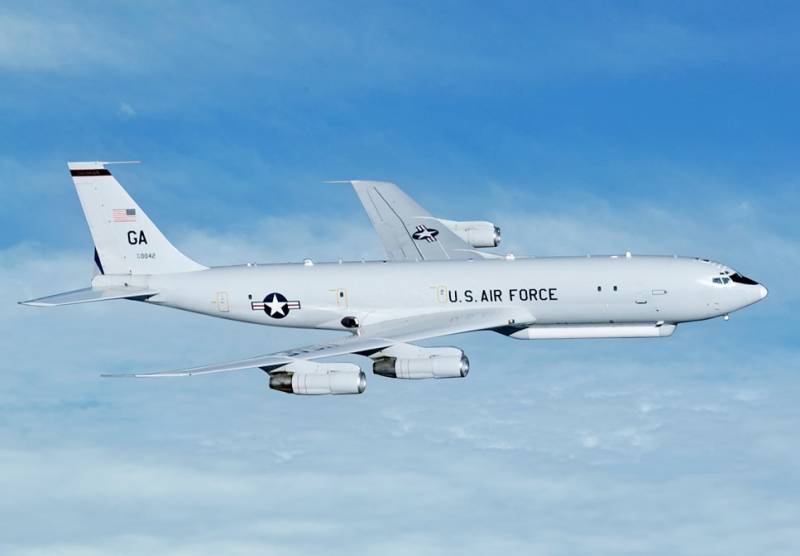

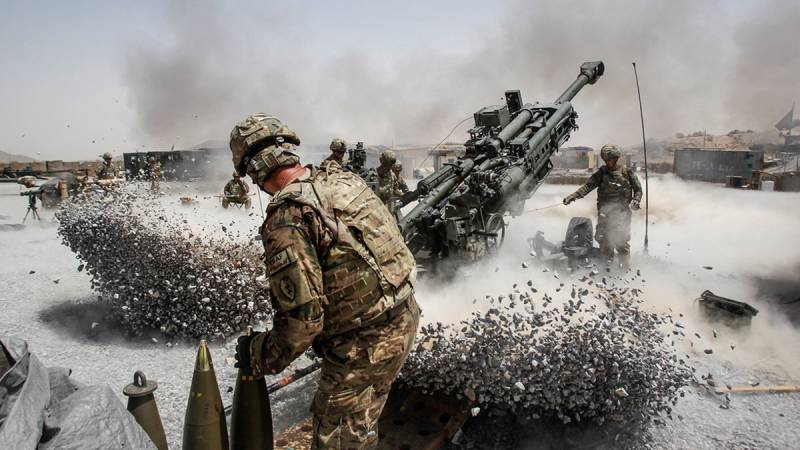
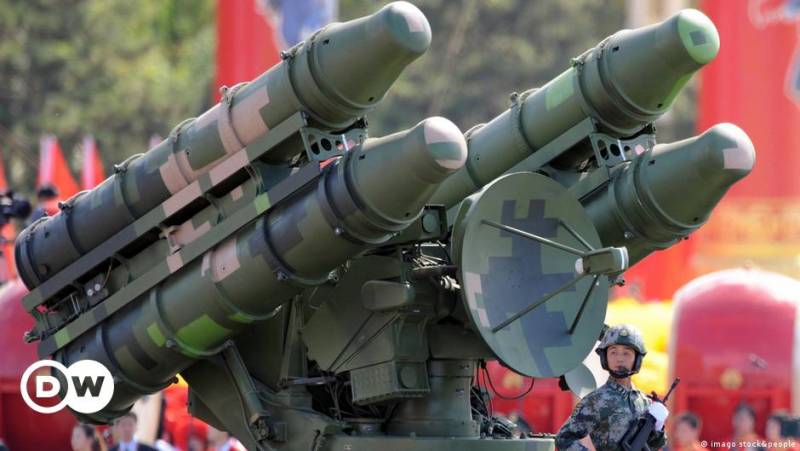
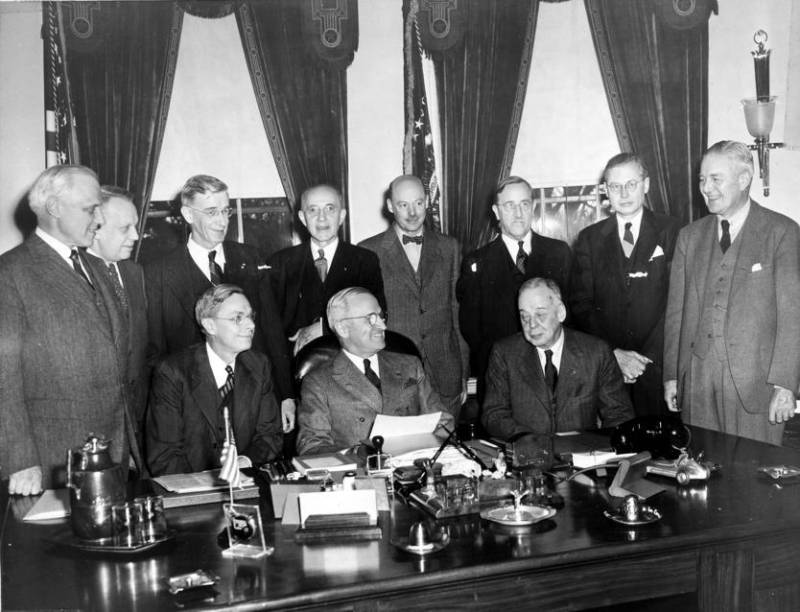
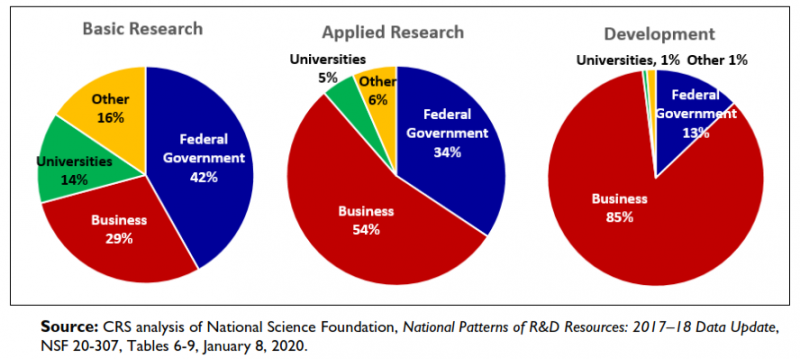
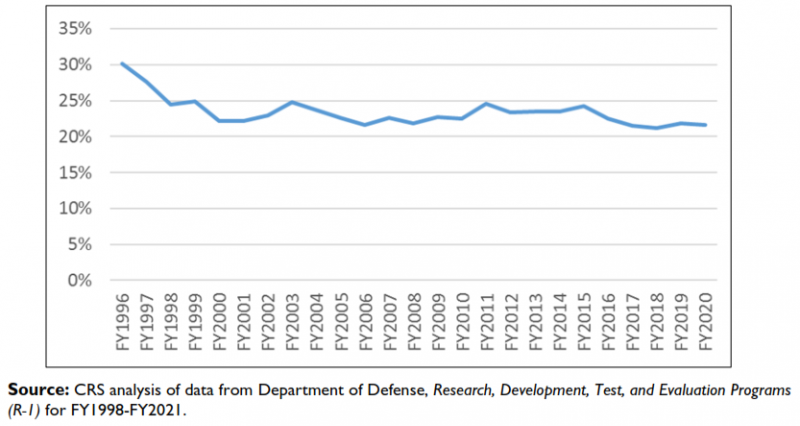
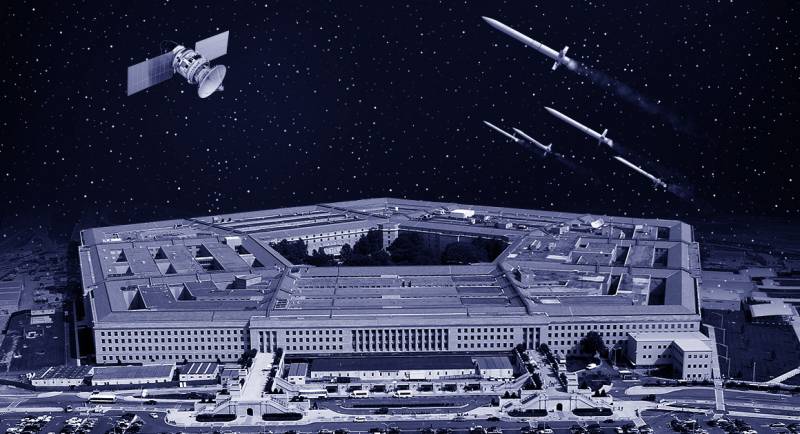


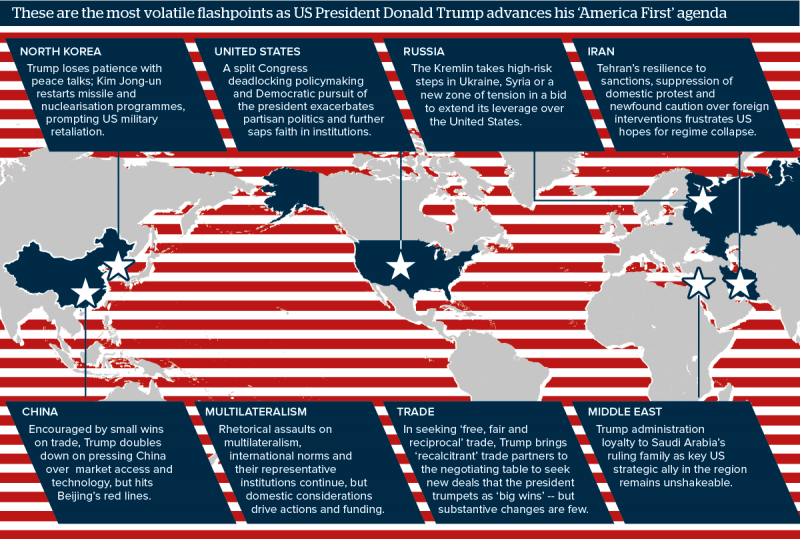

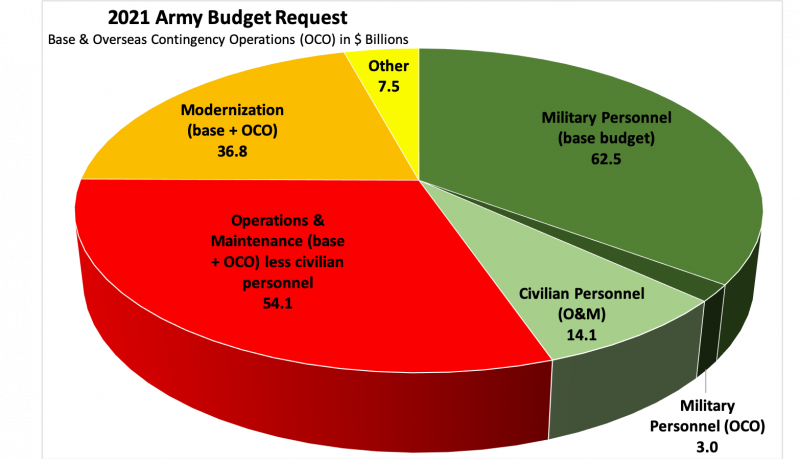
Information